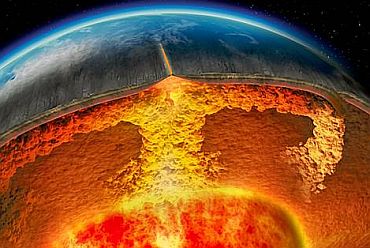In what mimics the classic sci-fi movie Journey To The Centre Of The Earth, British scientists claim to be planning to drill through five miles of solid rock to Earth's mantle for the first time, and bring back samples.
A team led by Dr Damon Teagle of the National Oceanography Centre in Southampton says that the incredible feat would involve tunnelling through five miles of solid rock on the sea bed in temperatures as high as 298 degree Celsius.
Once there, the pressure on the equipment would be a staggering four million pounds per square inch -- 285,000 times that of normal gravity, the scientists say.
...
Best place to drill to the mantle would be in the ocean
They hope to take samples and get them back up to the surface so people can learn more about the origins of the planet; they chose the mantle because it contains most of Earth's rocks so would likely yield specimens of interest, the Daily Mail' reported.
According to Dr Teagle, the best place to drill to the mantle would be in the ocean as the crust is thinner there.
The technical challenges would be enormous and the drill would have to function without a riser, a common safety feature where double pipes are used to vent gasses. Instead, seawater would have to be pumped into the hole with enough pressure to force samples being dug up back up to the surface.
Why previous attempts failed
Image: File photo of Project Mohole of the 1960sThere have been previous attempts to drill to the mantle but Project Mohole in the 1960s failed due to poor organisation and cost overruns.
Samples of rock from mantle have also found their way to the surface but they have been spouted out by volcanoes.
Dr Teagle and his team are now searching for a suitable site somewhere in the Pacific and hope to have the expertise, technology and funding in place by 2018.




article